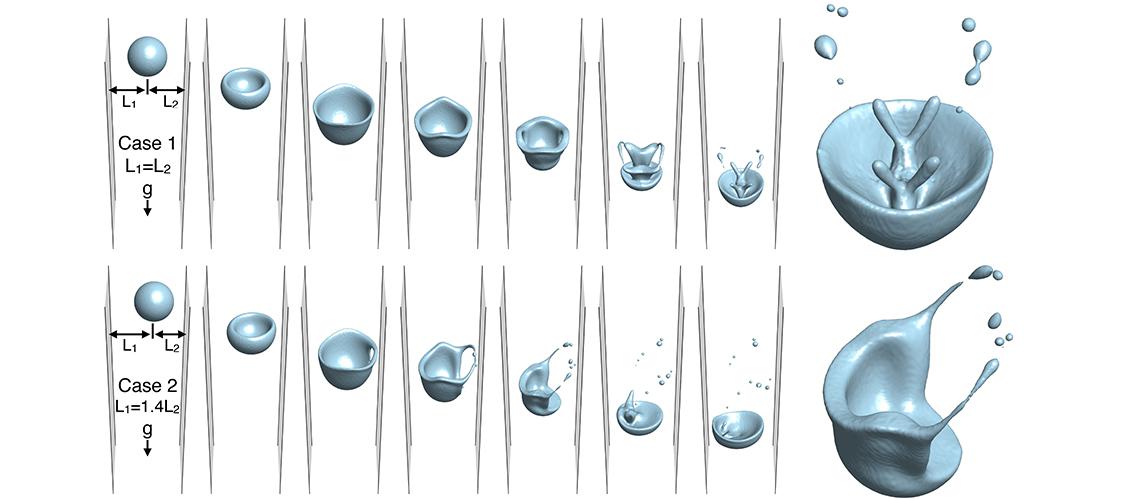
Multiphase fluid flows involve more than one state of matter, such as gasoline sprayed into air, or two fluids of the same state with different properties, such as oil droplets suspended in water. This type of flow is involved in many industrial and consumer processes, including fuel injection, spray coating, and inhaled medications. Insight gathered by studying multiphase systems allows researchers to improve these processes. One strategy for studying multiphase flows is to simulate their behavior with supercomputers. Simulation provides a means to observe behavior that is not accessible through experimentation. Performing these simulations requires the development and use of numerical and physical models that describe the multiphase system.
The group of MSI PI Sean Garrick, Professor of Mechanical Engineering in the College of Science and Engineering, has used MSI for many years to simulate turbulent reacting flows. This research uses a variety of techniques for scientific and engineering simulation, including direct numerical simulation and large eddy simulation.
The Garrick group has developed a method for modeling multiphase flows called the Lagrangian Volume of Fluid (LVOF). The LVOF was developed with the goal of being sufficiently affordable and accurate for scientific and industrial use. In order to make the approach both accurate and affordable, the LVOF uses a unique set of mathematical techniques to ensure the most fundamental details of the flow are efficiently and accurately described. This allows for the method to simulate complicated dynamics, such as flows with liquid elements that breakup into smaller pieces.
At the 2017 MSI Research Exhibition, Garrick group member and graduate student Everett Wenzel won the Grand Prize in Physical Sciences and Engineering with a poster describing the LVOF and how it can be used for multiphase flow simulation. Mr. Wenzel and Professor Garrick also presented the fundamental details of this work at the 2017 American Society of Thermal and Fluid Engineering conference in Las Vegas, Nevada, and at the 2017 Institute for Liquid Atomization and Spray Systems conference in Atlanta, Georgia.
Image Description: Multiphase dynamics are sensitive to small perturbations. Here we observe two droplets falling between parallel plates with different initial conditions. These are simulation results produced with the LVOF, and were run on Itasca using 192 MPI threads. The case 1 droplet is centered between the plates, while the case 2 droplet is slightly offset. Both droplets fall under the influence of gravity and rupture due to high shear stress caused by viscous boundary layers that develop on the parallel plates. Because the case 2 droplet is closer to the right plate, the resulting asymmetric shear stress causes the droplet to rupture asymmetrically. The small change in geometry from case 1 to case 2 has a significant effect on the resulting droplet distribution.
posted on September 19, 2017